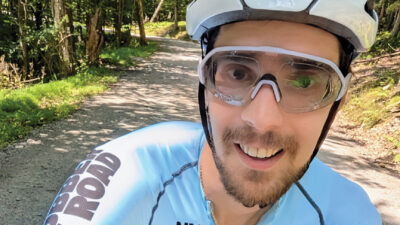When designing lighting for exterior areas such as parking lots and garages, engineers often find themselves dealing with two competing forces. On the one hand, there are the local energy codes. On the other are the recommended light levels from the Illuminating Engineering Society of North America (IESNA). Sometimes, the recommendations or requirements of one agency differs from those of another.
But while there may be competing issues with respect to the codes and the authorities having jurisdiction, all parties tend to agree that because of higher color temperatures and a superior color rendition index, metal-halide fixtures are the preferred source for illuminating parking areas. And when one adds pulse-start technologies to metal halides, exterior light efficiency levels are improved even further.
For the uninitiated, a few definitions may be in order. Color rendition index (CRI), expressed as a number from zero to 100, describes how a light source makes the color of objects appear to the eye. The higher the number, the better the CRI.
A comparison of metal halides with high-pressure sodium lamps gives an idea of the high level of CRI for metal halides. The former has a CRI of about 25, while metal-halide fixtures generally have a CRI in the range of 65 to 85.
But this doesn’t tell us everything we need to know in order to specify lighting systems. Let’s get down to the nuts and bolts of calculating light levels.
When calculating light levels, the electrical engineer or lighting designer must use what is known as a light loss factor (LLF) to account for conditions that degrade initial rated illuminance. This is because as a lamp ages, it produces less light on a predictable basis. LLF is calculated using three important variables.
Lamp lumen depreciation (LLD) for a metal-halide fixture is a percentage of the light output ratio of the mean lumens compared to initial lumens. Mean lumens for a metal-halide light source are typically given at 40% of lamp life. If group re-lamping is performed, the LLD factor should be determined at the time of re-lamping. LLF can be recoverable with maintenance of a lighting system or nonrecoverable, and includes losses from lamp dirt depreciation (LDD), LLD and ballast factor (BF). Typically, a 90% value is applied to LDD, which represents a fairly clean environment. Routine cleaning of the fixture and changing of the lamps would both be considered recoverable LLFs.
LLF is a measure of the light output after a given period of time and under given conditions and is expressed as a percentage of initial lumen output. One of the major contributors to LLF is LLD. If LLD can be improved, the LLF and associated calculated light levels could be increased. The LLD of a standard probe-start metal-halide fixture is about 65%, whereas a pulse-start is about 82%.
Fewer watts per sq. ft. are required with the pulse-start metal-halide fixture, because increased light levels are assured through the life of the lamp. The area to be illuminated does not have to be over-lit at the initial installation of the fixture to compensate for a large LLD factor. A higher LLD factor combined with the higher efficacy of pulse-start lamps leads to a more efficient lighting system—and lower life-cycle costs.
A standard LLF for a probe-start ballast using the LLF criteria mentioned above (LLD * LDD * BF) would equal about 0.6, as shown by the calculation in the “Calculating LLF” sidebar at left. With pulse-start metal-halide fixtures; the light loss factor can be increased to 0.75. This represents about a 25% increase in the de-rating value to the facility owner.
On a recent project, SASCO had to meet the 0.2 watts per sq. ft. energy requirement as now defined by the Washington State Energy Code, as well as meet IESNA recommendations for minimum light levels and uniformity ratios for exterior parking areas. (The recommended levels are given in the table below.)
On past projects, we had achieved a minimum value of 0.4 foot candles and a 17:1 maximum to minimum ratio (uniformity ratio) with an average of 1.8 fc utilizing 250-watt metal-halide fixtures with conventional probe-start ballasts on 20-ft. poles. Using the exact same lighting layout, but with pulse-start ballasts and lamps instead, the calculated light levels were increased to 2.3 fc on average and the uniformity ratio and minimum levels were maintained. This represents an increase average light level of about 25%.
Most metal-halide fixtures of 150 watts and less come standard in a pulse-start configuration. Larger lamps have pulse-start ballasts and lamps as an option. As a rough order of magnitude, we were quoted an additional $15 per ballast for the pulse-start ballast and an additional $10 for the probe-start lamp. On a project with 30 fixtures, the added price is far cheaper than even a single additional light pole. Several poles with the standard probe-start ballast and lamps would have been required to both increase the average foot candles and maintain uniformity ratios (maximum to minimum ratio).
In addition, there are other advantages to utilizing pulse-start ballasts and lamps. The pulse-start lamps can last 50% longer than the conventional probe lamp and produce a whiter light—i.e., higher color temperature. Lamp restrike time has also been reduced through the use of the pulse-start lamps. Finally, lamp efficacy can be increased from about 75 lumens per watt to about 100 lumens per watt.
Other outdoor issues
While parking area lighting is of vital concern to the designers of retail facilities, there are other types of exterior lighting for such operations to concern themselves with: roadways, pedestrian walkways, stairways, bikeways and the like.
The chart at bottom right offers a summary of the average illuminance levels as required by IESNA for various outdoor areas. The highest light level, for commercial area walkways, is only 0.9 foot candles.
Also, any exterior lighting design is now affected by LEED certification. One of the credits required for LEED, “Light Pollution Reduction,” requires that light level at the exterior of the building are at the levels or lower than those levels recommended by the IESNA.
It’s not appropriate to light these exterior areas for emergency egress purposes to these very high light levels that far exceed IESNA recommendations for normal lighting. I also do not believe that this is the intent of the Uniform Building Code.
In the end, whether it’s for parking areas or other exterior locations, new lighting technology allows lighting designers to provide quality lighting within the requirements of the latest energy codes and provide life-long energy savings and decreased re-lamping cost to the facility owner.
| Basic | Enhanced Security | |
| Minimum Horizontal Illuminance | 0.2 fc | 0.5 fc |
| Uniformity Ratio, Max-Min Ratio | 20:1 | 15:1 |
Calculating LLF
The formula for calculating Light Loss Factor is:
(LLD * LDD * BF)
Probe-Start Metal-Halide
Lamp Lumen Depreciation: 0.65
Lamp Dirt Depreciation Factor: 0.91
Ballast Factor: 1.00
The light loss factor is 0.60.
Pulse-Start Metal-Halide
Lamp Lumen Depreciation: 0.82
Lamp Dirt Depreciation Factor: 0.91
Ballast Factor: 1.00
The light loss factor is 0.75.
Actual LLF values vary with specific fixture and lamp configurations.
Other light loss factor criteria include the following: supply voltage variation, fixture surface depreciation, lamp position factor, lamp burnout factor, room surface dirt depreciation factor, ambient temperature factor and optical factor. These additional criteria were not considered for the purpose of this example.
IESNA Recommendations for Outdoor Lighting
The table below is a summary of the average illuminance levels required by the Illuminating Engineering Society of North America for various outdoor areas.
Based on previous experience, if I were asked to provide light levels in an exterior area with a minimum level of 1 foot candle, the average light levels would equate to about 5 to 6 foot candles. The actual level of lumens per sq. ft. would be based on the light source used, the mounting height and the configuration of the outdoor area. This represents about 556% to 667% (5/0.9 = 556%, 6/0.9 = 667%) of the highest levels recommended by the IESNA for normal lighting along commercial walkways and bikeways.
Recommended Maintained Illuminance Values (in Foot Candles)
| Average Area | Uniformity Horizontal | Average Ratio | Vertical |
| *IESNA Handbook does not include uniformity ratio. | |||
| Walkway/Bikeway Roadside Sidewalk Commercial Area | 0.9 | * | 2.0 |
| Distant Roadway Sidewalk | |||
| Walkway/Bikeway/Stairway | 0.5 | * | 0.5 |
| Pedestrian Tunnels | 4.0 | * | 5.0 |



